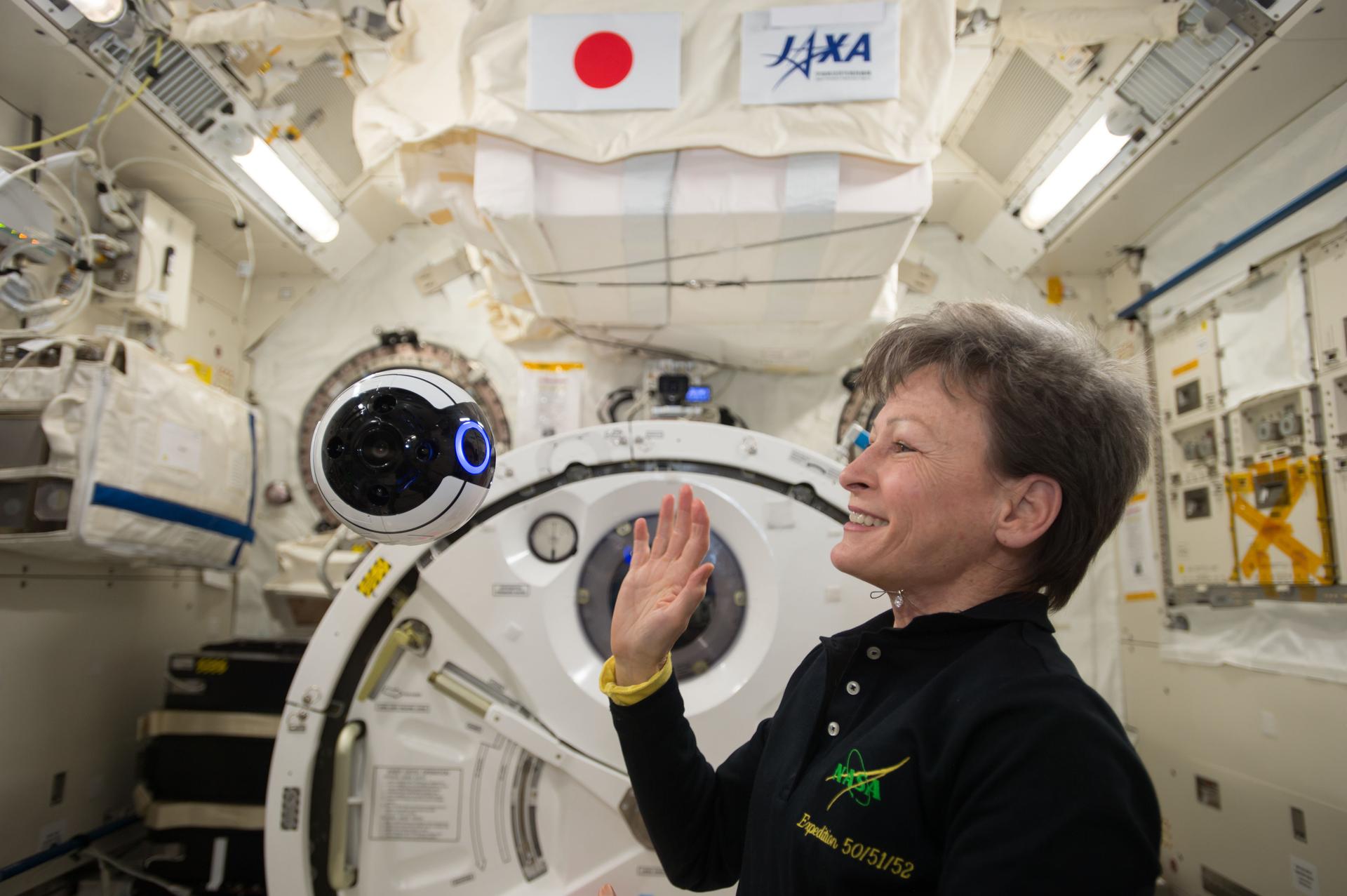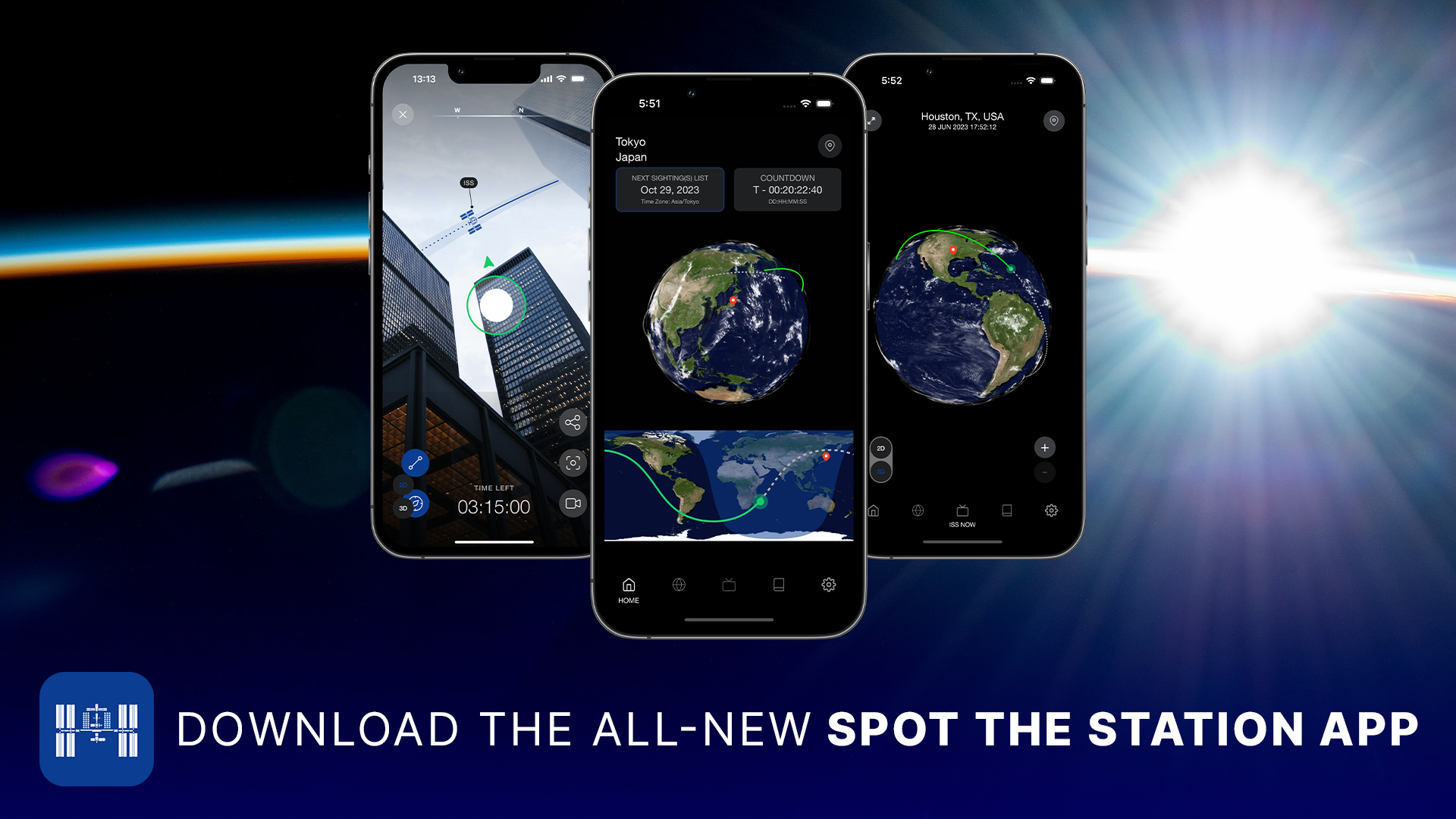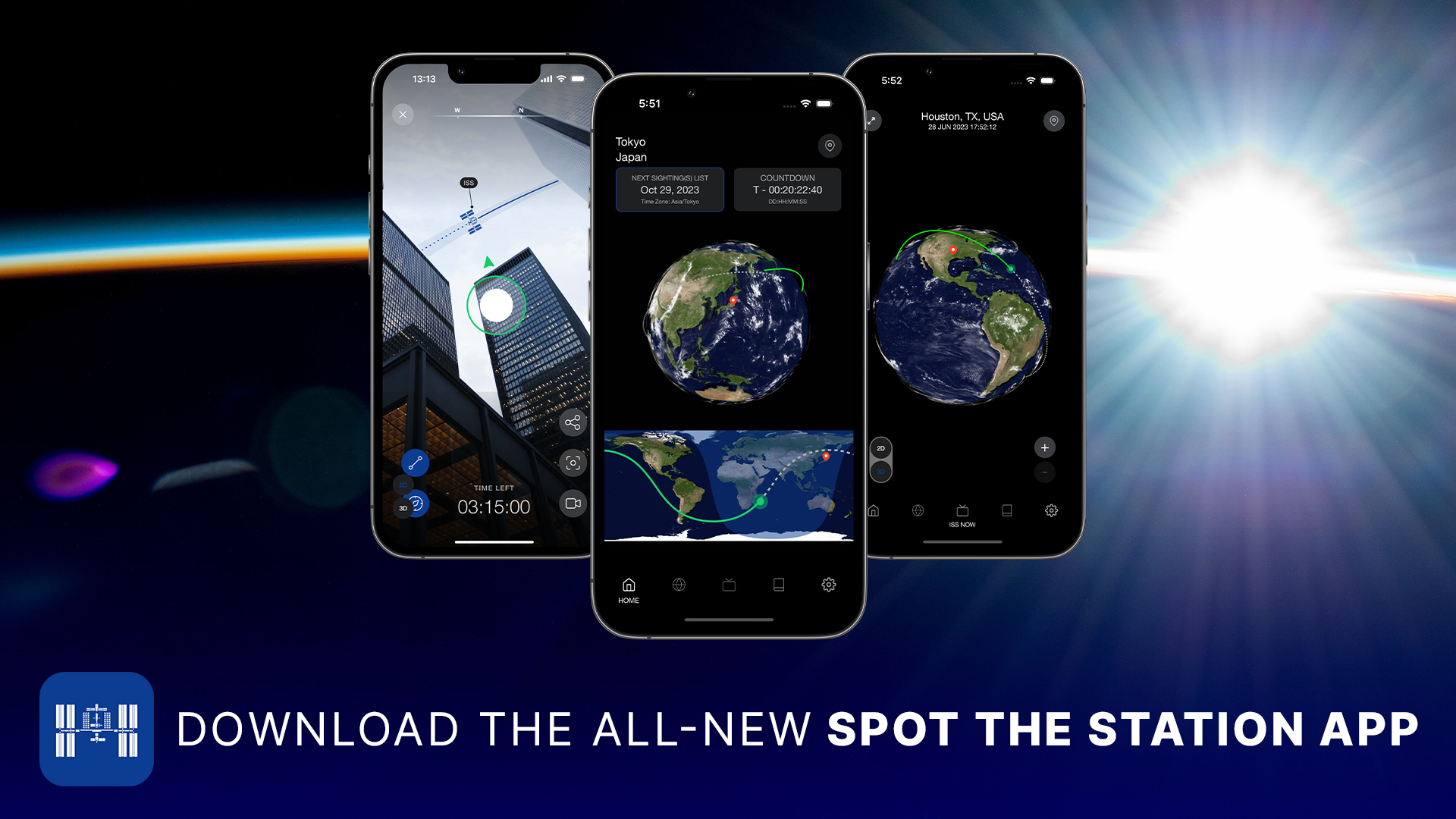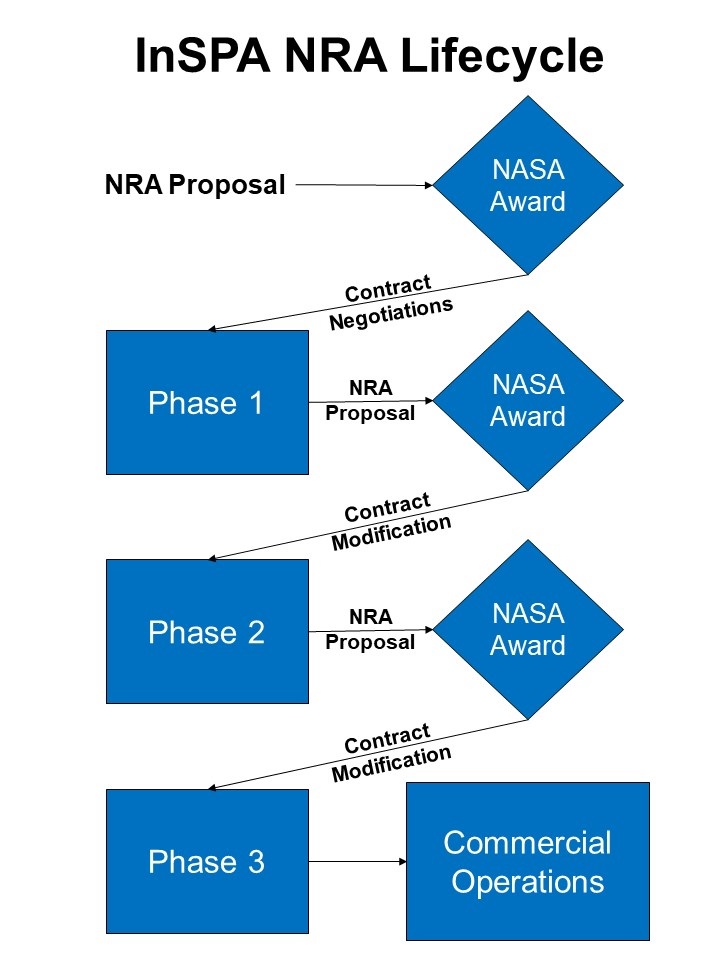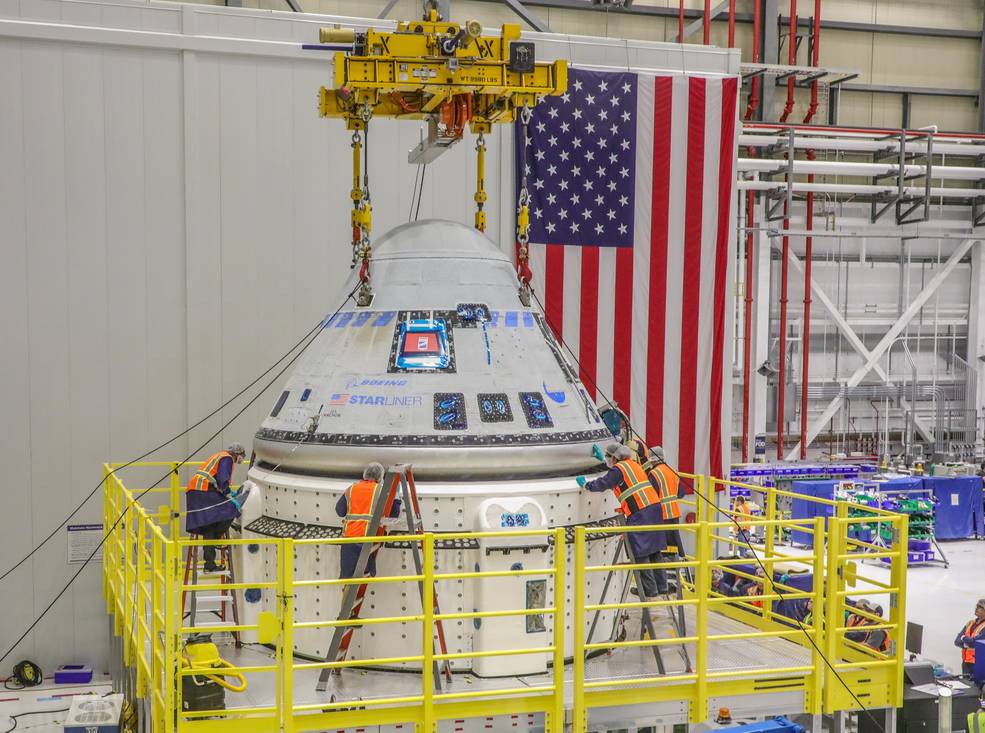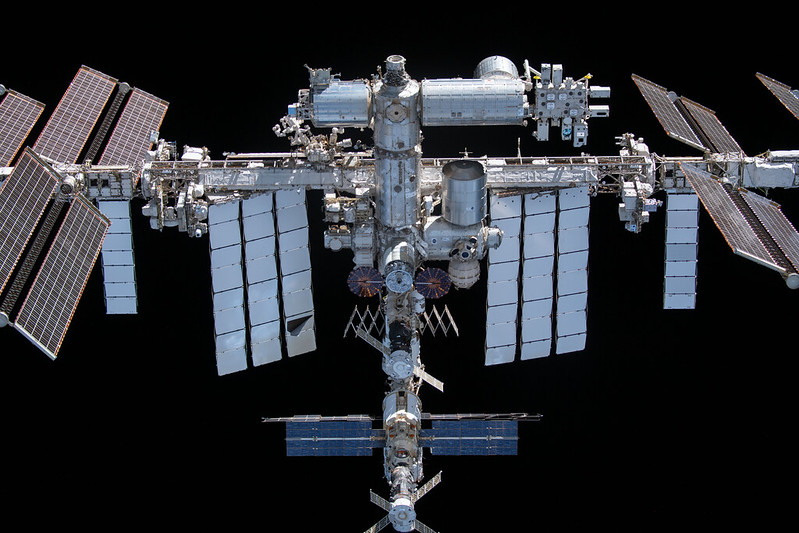6 Min Read Science in Space: Robotic Helpers NASA astronaut Steve Swanson and ESA astronaut Alex Gerst set up SPHERES satellites. Credits: NASA Crew time is a valuable resource on the International Space Station and its value only increases for future space missions. One way to make the most of crew time is using robotic technology either to assist crew members with various tasks and or to completely automate others. A current investigation on the space station, JEM Internal Ball Camera 2, is part of ongoing efforts to develop this…
Read MoreTag: International Space Station (ISS)
Una nueva aplicación de la NASA ayuda a avistar la estación espacial
4 min read Una nueva aplicación de la NASA ayuda a avistar la estación espacial NASA Read this release in English here. La NASA está haciendo más fácil para el público avistar Estación Espacial Internacional, el hogar de la humanidad en el espacio, mientras esta sobrevuela la Tierra, así como ampliando el acceso a noticias y recursos sobre este laboratorio en microgravedad con una nueva aplicación para teléfonos móviles, o celulares, llamada Spot the Station (Avista la estación). La aplicación para celulares ya está disponible para descargar en iOS y Android.…
Read MoreLook Up: New NASA App Helps Stargazers Spot Space Station
3 min read Look Up: New NASA App Helps Stargazers Spot Space Station An augmented reality interface makes it easier for users to locate the station and provides options for capturing and sharing pictures and videos of their sightings in real-time. The app’s built-in compass will show you where the space station is – even if you’re on the other side of the globe. NASA Lee esta nota de prensa en español aquí. NASA is making it easier for the public to spot the International Space Station, humanity’s home in space,…
Read MoreInSPA Inter-Agency Collaboration Goals
High quality production photos of Robonaut (R2) in Building 14 EMI chamber and R1/EMU photos in Building 32 – Robonaut Lab. Photo Date: June 1, 2010. Location: Building 14 – EMI Chamber/Building 32 – Robonaut Lab. NASA / Robert Markowitz & Bill Stafford NASA knows it takes a village to make commercial manufacturing in space a reality. NASA is collaborating with experts from industry, academia and other U.S. Government agencies on the technologies in play with the InSPA portfolio. By joining forces with these experts, NASA can better support its…
Read MoreNASA Implementation Strategy for In Space Production Applications
NASA’s In Space Production Applications (InSPA) implementation strategy consists of a multi-phase award process to demonstrate proof-of-concept, advance to high production quality, and ultimately to achieve scalability on a commercial low Earth orbit (LEO) destination or platform. InSPA seeks to identify awardees who propose promising manufacturing efforts in microgravity that will invigorate markets on Earth. These InSPA awards help the selected companies raise the technological readiness level of their products and move them to market, propelling U.S. industry toward the development of a sustainable, scalable, and profitable non-NASA demand for…
Read MoreIn Space Production: Applications Within Reach
In microgravity, crystals grow more slowly, but the molecules have time to align more perfectly on the surface of the crystal, which returns much better research outcomes. NASA After four decades of microgravity research, NASA and the ISS National Lab have identified numerous applications that are within reach for NASA’s In Space Production Applications (InSPA) portfolio. Uniform crystals, semiconductors, specialized glass and optical fibers are just a few of the many advanced materials that can benefit from production in microgravity. Artificial retinas, drug delivery medical devices, as well as the…
Read MoreWhat is In Space Production Applications?
NASA supports In Space Production Applications (InSPA) awards to help the selected companies raise the technological readiness level of their products and move them to market, propelling U.S. industry toward the development of a sustainable, scalable, and profitable non-NASA demand for services and products in low-Earth orbit. These commercialization awards provide opportunities for NASA to reduce its future costs in LEO enabling deep-space missions farther from Earth, including the Moon and Mars. NASA is leading commercial LEO development efforts to stimulate non-NASA demand for commercially owned and operated orbital destinations from…
Read MoreNASA’s Modern History Makers: Sarah Tipler
5 min read NASA’s Modern History Makers: Sarah Tipler Sarah Tipler poses in front of a mural of NASA astronaut Michael Anderson in Plattsburgh, New York. Credit: Sarah Tipler <back to gallery Growing up, Sarah Tipler always felt out of place. She had trouble with time management, structuring her day, and focusing her attention, but she didn’t know why. “For all of my undergraduate education, I really struggled to keep up despite understanding the material,” Tipler said. “It took a ton of work to make good grades happen, including asking…
Read MoreProgress Continues Toward NASA’s Boeing Crew Flight Test to Station
NASA and Boeing are working to complete the agency’s verification and validation activities ahead of Starliner’s first flight with astronauts to the International Space Station. While Boeing is targeting March to have the spacecraft ready for flight, teams decided during a launch manifest evaluation that a launch in April will better accommodate upcoming crew rotations and cargo resupply missions this spring. The Starliner team works to finalize the mate of the crew module and new service module for NASA’s Boeing Crew Flight Test that will take NASA astronauts Barry “Butch”…
Read MoreNASA Updates Commercial Crew Planning Manifest
The International Space Station’s U.S. segment and portions of the Russian segment are pictured from the SpaceX Crew Dragon Endeavour during a fly around of the orbiting lab that took place following its undocking from the Harmony module’s space-facing port on Nov. 8, 2021. Prominent at the top in this view, are the Columbus laboratory module, the Harmony module and its space-facing docking port, and the Kibo laboratory module with its external pallet. NASA NASA and its industry partners Boeing and SpaceX are planning for the next set of missions…
Read More